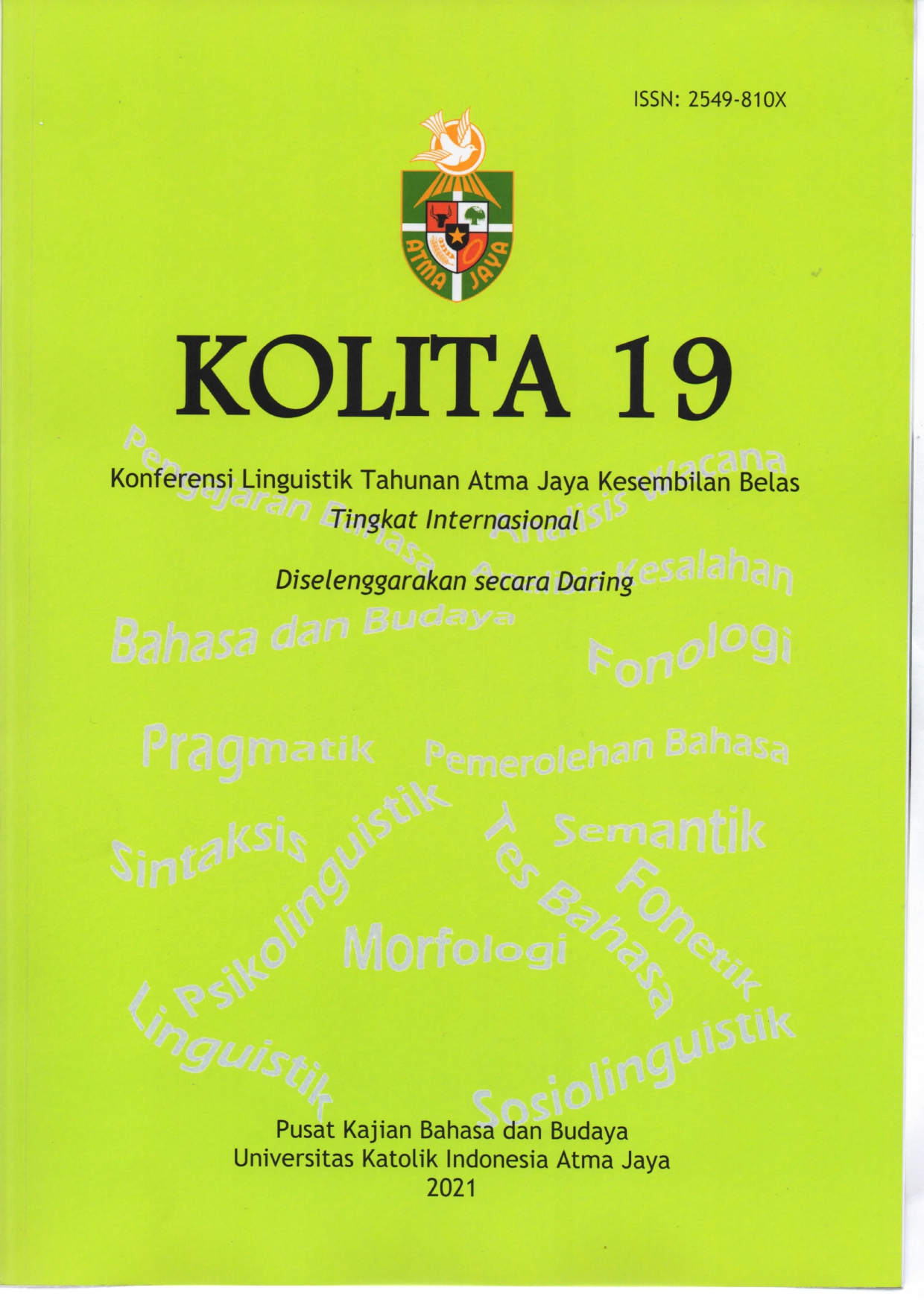AN ERROR ANALYSIS OF LEXICAL COLLOCATION ERRORS IN THE JAKARTA POST NEWS ARTICLES
Keywords:
analysis, lexical collocation, errorsAbstract
When speaking or using a language, one has to have acquired vocabularies, for they are vital for communicative purposes. Wilkins, as quoted in Farghal & Obeidat (1995), seconded the notion and stated that vocabularies play a more important role than grammar, as without lexis nothing can be conveyed, and grammar only conveys something little. When using a language, it is so often that non-native speakers combine words that should not co-occur together. Farghal & Obeidat (1995) affirms that collocations are quite troublesome for EFL learners, and the main sources of errors are related to paraphrasing, overgeneralization, L1 interference, interlingual transfer, intralingual transfer, and lack of collocational knowledge in English. In the process of mastering a language,
however, collocation plays quite an important role (Thornbury, 2002). Hanks (1987) stated that words appear together to form collocational patterns, and yet, nonnative speakers often have word combinations in a non native like manner, making the combinations sound unnatural to native speakers. According to Benson, Benson and Ilson (2009) collocations are divided into 2 categories: grammatical and lexical. However, the spotlight of this study is on the lexical collocations. Out of 7 types of lexical collocations, the writer only opted for “verb+noun” word combinations, since such combinations always appear in sentences. The source of the data were taken from news articles from The Jakarta Post, a daily English language newspaper in Indonesia. There are two objectives of this study. First, the writer would like to see if the news articles that have gone through editing processes may still have any errors of lexical collocations. Furthermore, he would also like to analyze how the lexical collocations may possibly have contributed to the production of the English collocations in the articles. To seek the collocational errors, the writer consulted the Cambridge Dictionary, Oxford Collocation Dictionary as well as COCA (Corpus of Contemporary American English). Next, after the errors were identified, the writer made a list and analyzed how the errors of the English lexical collocations might take place. The results showed that there are only around 13 lexical collocation errors found within about 20 news articles from the business category. The errors came from paraphrasing, lack of English lexical collocations, as well as L1 interference. This study showed that even advanced learners of English still produced uncommon lexical collocations. From these findings, it is highly recommended that its teaching should be a top priority in every language course.






